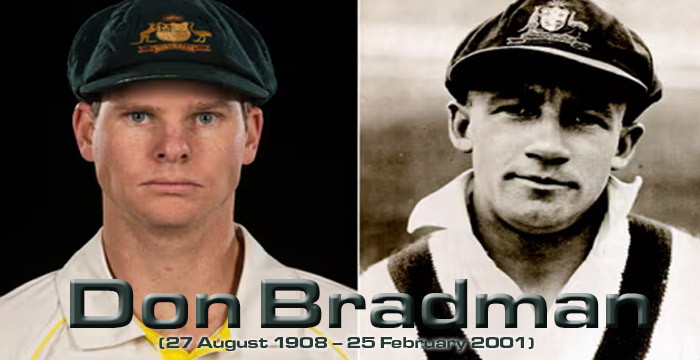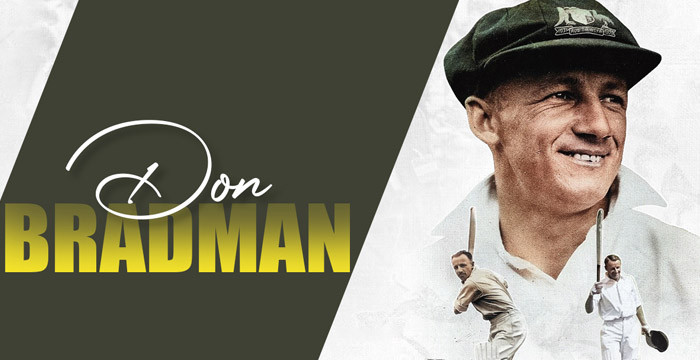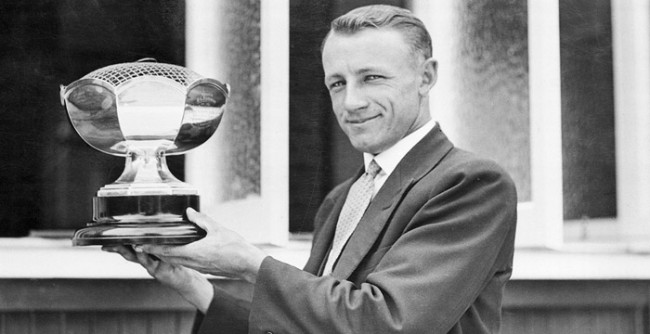When cricket fans debate the fastest century of all time, one name rewrites the rulebook: Sir Donald Bradman. In a jaw-dropping 1931 charity match, Bradman scored 100 runs in just 3 overs, a feat so astonishing that it still feels almost mythical. Though not part of the official record books, this legendary innings remains one of cricket’s most iconic performances, unmatched and likely unbeatable.

A Century in 3 Overs? Here’s How Bradman Did It
The year was November 1931, and the venue was a charity exhibition match in New South Wales, Australia. Bradman was playing for Blackheath against Lithgow. At just 23 years old, he took the crease and unleashed one of the most explosive innings ever witnessed.
Each over consisted of eight balls (as was the norm in Australia at the time), allowing more scoring opportunities per over than the modern six-ball format.
The Over-by-Over Breakdown
- First Over (Bowler: Bill Black)
6, 6, 4, 2, 4, 4, 6, 1 → 33 runs - Second Over (Bowler: Horrie Baker)
6, 4, 4, 6, 6, 4, 6, 4 → 40 runs - Third Over (Bowler: Bill Black)
1, 6, 6, 1, 1, 4, 4, 6 → 29 runs
In just 22 balls, Bradman reached 100 runs, including 12 sixes and 9 fours. He later went on to score 256 runs in total, with a remarkable tally of 14 sixes and 29 fours in the innings.
Why This Record Is So Unique
- Eight-ball Overs: Modern cricket uses six-ball overs, capping a maximum of 36 runs per over. In 1931, eight-ball overs could yield up to 48 runs, making Bradman's 100 theoretically possible.
- Match Type: This was a non-official charity match, so it doesn’t appear in official statistics, but the feat is well-documented.
- Quality of Bowling: The bowlers were local, not professional Test players, but that doesn't diminish the speed and dominance of Bradman's hitting.
- Strike Rotation: Bradman's partner, Wendell Bill, kept rotating the strike to allow Bradman maximum exposure, highlighting smart batting tactics even in an exhibition match.
How It Stacks Up Against Modern Cricket Records
While Bradman’s 3-over century isn’t part of formal cricket records, no modern player has come close. Here's how it compares:
| Format | Player | Balls for Century | Match Type | Year |
| T20 | Chris Gayle | 30 | IPL (RCB vs Pune) | 2013 |
| ODI | AB de Villiers | 31 | SA vs West Indies | 2015 |
| Test | Brendon McCullum | 54 | NZ vs Australia | 2016 |
| First-Class | David Hookes | 34 | Victoria vs NSW | 1982 |
Even under perfect conditions, three six-ball overs can only produce 108 runs. That would require hitting 18 sixes in a row—something never accomplished in professional cricket. Bradman’s 100 in 22 balls, across three eight-ball overs, still stands tall in comparison.
Other Players with Lightning-Fast Innings (But Not 3-Over Centuries)
While no one has equaled Bradman’s blitz, these players have etched their names in the record books:
- Yuvraj Singh: Fastest T20 fifty (12 balls), including 6 sixes in an over
- Glenn Maxwell: 40-ball ODI century in 2023
- Rishabh Pant: 48-ball century in domestic cricket at age 19
- Rohit Sharma: 35-ball T20I century (joint-fastest)
Yet even their stunning efforts don’t match Bradman’s pace or scale within just three overs.
A Look at Bradman’s Other Historic Achievements

Sir Donald Bradman wasn’t just a one-match wonder. His entire cricketing career is filled with records that still hold firm:
- Test Average of 99.94 – a number that has become a benchmark of greatness.
- 29 Test centuries in only 52 matches.
- Scores of 300+ in a single day, including a 309-run day against England in 1930.
- Dominated every format he played, even under vastly different conditions.
Bradman remains cricket's gold standard, and this 3-over century is just one gem in his crown.
Why Bradman’s Century Will Never Be Repeated
Modern cricket has evolved dramatically since the 1930s, but Bradman's feat stands apart due to:
- Structural limits: Six-ball overs and stronger fielding setups prevent such rapid scoring.
- Competitive intensity: Today’s matches are more strategic, with field placements, analytics, and high-quality bowling attacks.
- Exhibition nature: Bradman’s match was played in a more relaxed setting, allowing creativity and explosive play in a way that's rare today.
“It happened purely by accident,” Bradman later recalled, “and everyone was surprised at the outcome.”
Even with all the advancements in T20 and franchise cricket, nobody has gotten close to 100 in 3 overs.
The Fastest Century That May Never Be Broken
So, who scored a century in just 3 overs? Only Don Bradman.
Even though it wasn’t an official match, it was a real innings, and one of the most astonishing in cricket history. With 12 sixes, 9 fours, and 22 balls faced, Bradman’s 3-over century remains an unmatched example of dominance with the bat.
In an era before modern bats, T20s, or powerplay rules, Bradman showed the world what batting brilliance looks like. It’s more than just a statistic—it’s a piece of cricketing legend that reminds us why he's called The Don.















